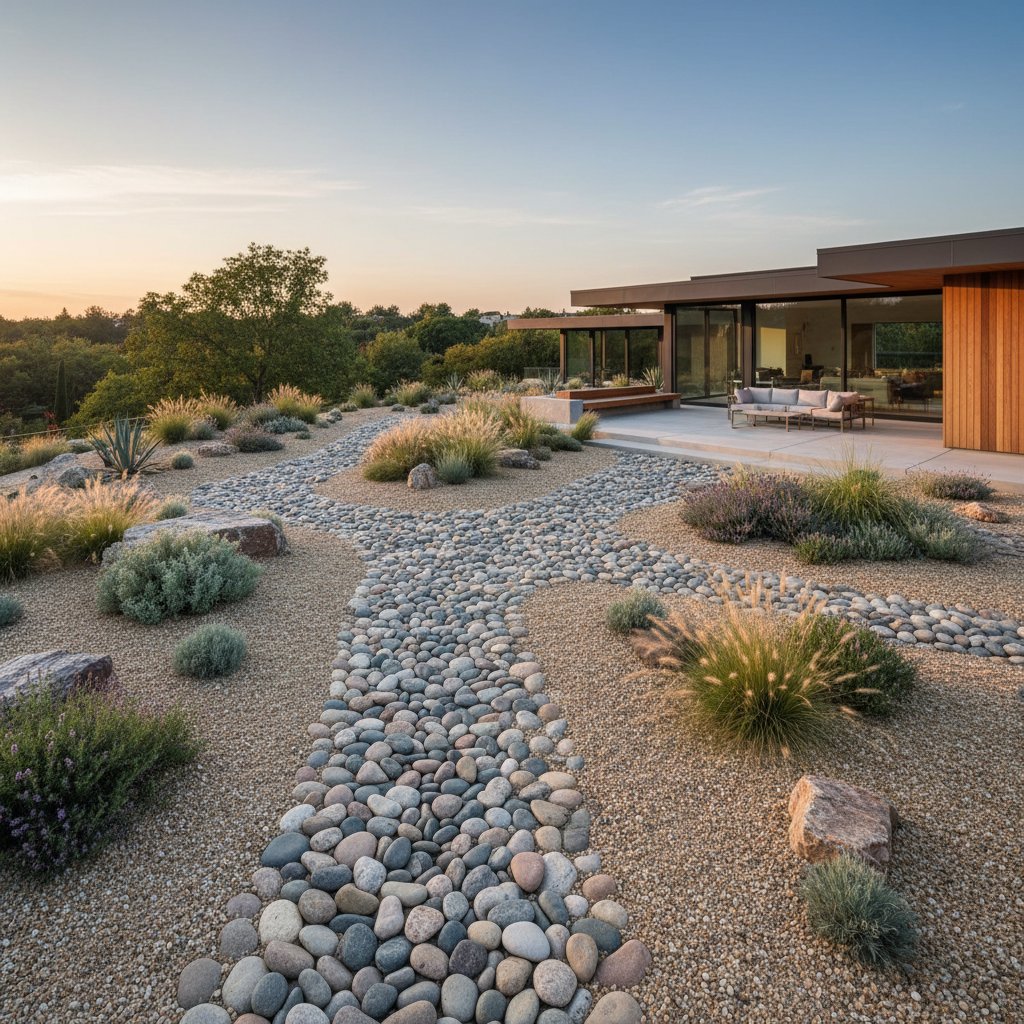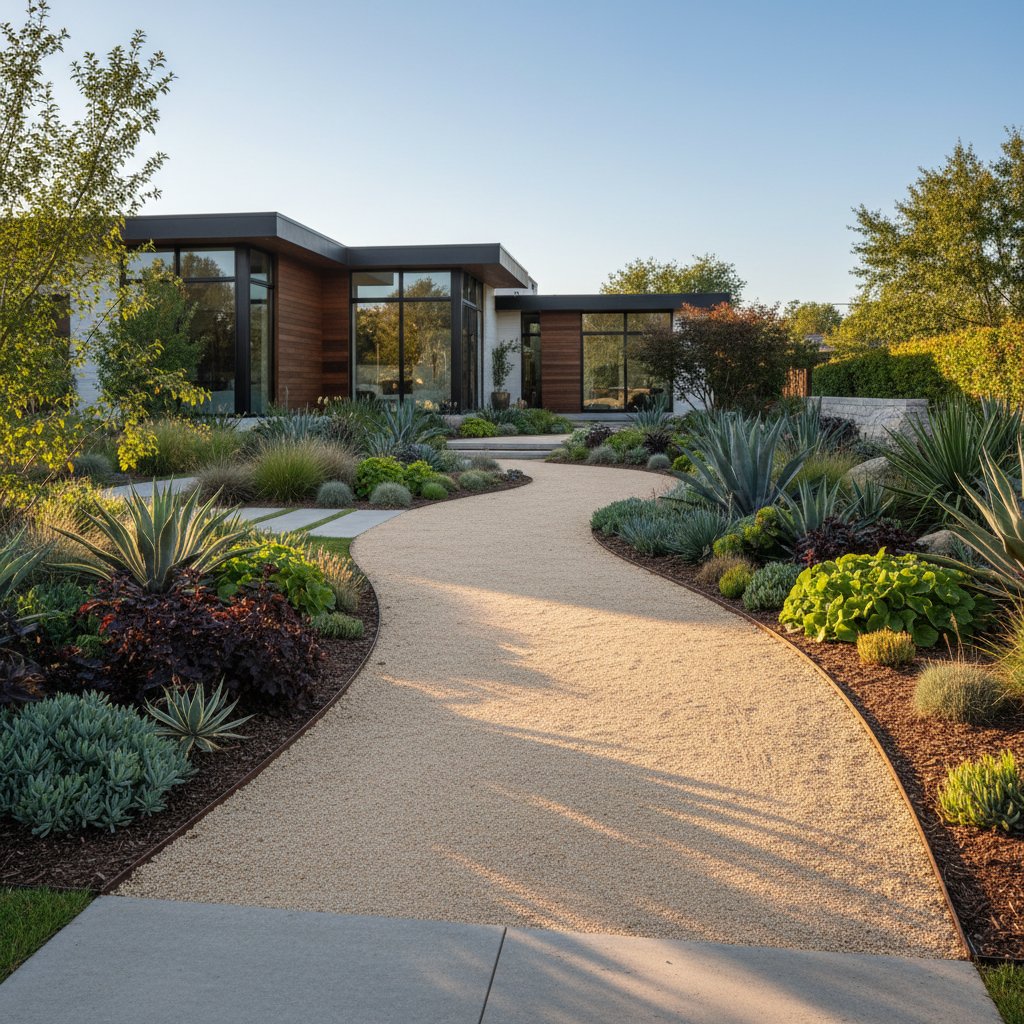Decomposed Granite: 2025's Leading Budget Hardscape Material
A garden path that yields a soft crunch underfoot evokes a deep connection to the natural world while maintaining an orderly appearance. This harmonious blend of rustic charm and structured elegance attracts homeowners to decomposed granite, commonly known as DG. As a versatile material, DG delivers affordable style to outdoor spaces of any scale through its inherent texture, warmth, and enduring presence.
What Decomposed Granite Entails
Decomposed granite originates from weathered granite rock, reduced to a mix of fine gravel and dust particles ranging from sand-sized grains to small pebbles. This composition creates an authentic, earthy texture available in tones such as tan, gold, brown, or gray, influenced by the rock's origin. Certain varieties include mica flecks that reflect light, adding subtle visual interest. Distinct from ordinary gravel, decomposed granite compacts into a stable surface that permits effective drainage.
Three primary forms exist, each suited to specific applications:
- Loose Decomposed Granite: The most straightforward option, it spreads with ease and provides a relaxed, organic aesthetic. Ideal for low-traffic zones or as mulch around plantings.
- Stabilized Decomposed Granite: Incorporates a binding additive to enhance cohesion. Suitable for moderate use in pathways, patios, or lounging spots.
- Resin-Coated Decomposed Granite: Offers superior durability, hardening akin to asphalt while preserving a stone-like look. Best for driveways or high-traffic routes.
Selection hinges on the intended function and traffic level of the area.
Reasons Homeowners Choose Decomposed Granite
Homeowners value decomposed granite for its adaptability across contemporary and traditional garden styles. During budget constraints, it enables significant outdoor enhancements at a fraction of the expense of concrete slabs or stone tiles. The material imparts depth and hue without an overly manufactured feel.
Practically, decomposed granite excels in several ways:
- Cost-Effectiveness: Inexpensive sourcing and straightforward installation often eliminate the need for specialized machinery.
- Minimal Upkeep: Periodic raking and minor additions suffice to preserve its condition.
- Water Permeability: Rainwater infiltrates the surface, minimizing erosion and benefiting adjacent vegetation.
- User Comfort: Cooler than concrete in sunlight and softer for walking, it enhances daily enjoyment.
These attributes position decomposed granite as a preferred choice for those seeking aesthetic appeal with simplicity.
Decomposed Granite Versus Alternative Hardscapes
Each hardscape option carries unique characteristics that inform selection.
- Concrete provides sleek modernity but risks appearing cold and prone to cracking.
- Pavers deliver defined patterns at elevated costs and installation demands.
- Standard Gravel mirrors decomposed granite in looseness but displaces easily under movement.
- Mulch offers organic softness yet degrades rapidly, requiring regular renewal.
Decomposed granite bridges these choices effectively. More organic than concrete yet firmer than gravel, it facilitates seamless integration from planting beds to gathering areas, fostering a unified and serene environment.
Creative Applications for Decomposed Granite
Decomposed granite's flexibility supports diverse designs, from sparse courtyards to vibrant gardens. Key implementation ideas include:
- Walkways: Curves naturally into the landscape; border with metal or stone for defined edges.
- Patios and Lounges: Stabilized versions form reliable bases that complement timber seats or rock perches.
- Driveways: Resin-coated variants withstand vehicular loads while retaining earth tones.
- Surface Cover: In arid regions, it supplants water-intensive turf, conserving resources.
- Interstone Filler: Occupies voids around pavers, suppressing weeds and enabling drainage.
To achieve cohesion, incorporate decomposed granite repetitively. A pathway extending to a patio, for instance, unifies elements and directs movement with understated grace.
Step-by-Step Installation Guidance
Proper installation ensures longevity. First, outline the site and clear vegetation or rubble. Level the ground with a gentle incline to direct water from buildings.
Establish a foundation of compacted crushed stone for load-bearing areas. Apply decomposed granite in thin layers, dampen each with a fine water spray, and compact thoroughly to interlock particles. For stabilized forms, adhere precisely to binder mixing ratios provided by the supplier.
Schedule work during dry conditions to avoid clumping. Permit full curing before use, allowing the surface to settle into a durable finish.
Ongoing Maintenance Practices
Decomposed granite requires light attention to remain pristine. Address settling spots with raking and a scant refresh layer. If overly dense, gentle watering revives suppleness.
Remove fallen leaves or debris promptly to prevent staining. Annually, apply a new topcoat to renew vibrancy. For treated surfaces, examine post-rain or winter for fissures, repairing swiftly to avert escalation.
Sustainability and Visual Advantages
Decomposed granite aligns with eco-conscious practices through its drainage properties, which sustain soil health and aquifer replenishment. Sourcing from nearby quarries lowers transport emissions relative to distant imports.
Visually, it grounds hard elements within softer landscapes. Fine grains and earthy shades harmonize with indigenous flora, drought-tolerant succulents, and prairie grasses, promoting tranquility and genuineness.
Selecting Optimal Shades and Finishes
Shade selection shapes design integration. Golden variants infuse luminosity, grays suit sleek builds, and earthy reds enhance arid motifs. Examine specimens under daylight, as installed tones may vary subtly from samples.
Integrating Decomposed Granite into Daily Use
Decomposed granite matures gracefully, with weather enhancing its patina and use imprinting subtle narratives.
Begin modestly if unfamiliar, such as a modest trail or alcove. Monitor performance across seasons to inform broader applications.
Implement Decomposed Granite in Your Outdoor Space
Decomposed granite provides an accessible route to resilient, attractive exteriors. Its equilibrium of economy, ease, and refinement stands out among options. With knowledge of variants, placements, and upkeep, craft intentional havens that encourage lingering appreciation of nature.



